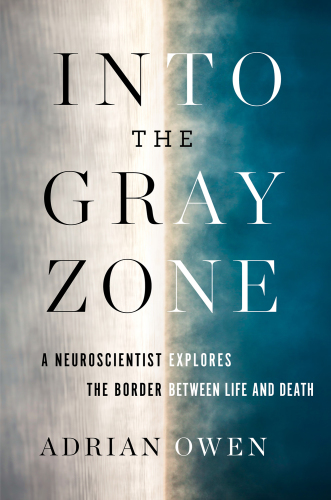
Into the Gray Zone
A Neuroscientist Explores the Border Between Life and Death
یک متخصص علوم اعصاب از مرز میان زندگی و مرگ بهرهبرداری میکند
کتاب های مرتبط
- اطلاعات
- نقد و بررسی
- دیدگاه کاربران
نقد و بررسی

April 3, 2017
In this vivid, emotional, and thought-provoking account, Owen, research chair in cognitive neuroscience and imaging at the University of Western Ontario’s Brain and Mind Institute, surveys his research on the human brain in a non-responsive state. Case by case, Owen probes the limits of human consciousness while taking readers bedside to observe trauma victims, many who have been in coma-like states for years, but whose severely damaged brains show clear signs of responding to his bizarre tests. As technology advances from PET scans to fMRIs, Owen and his colleagues devise more complicated means of communicating with “gray zone” patients. International headlines are made and ethical questions are raised. One patient, who regains her ability to speak and walk, shares what it was like to be treated as vegetative despite her awareness of everything going on around her. Using an experiment involving a Hitchcock film, Owen finds that several subjects believed to be vegetative are fully aware. “It was a haunting reminder of the resiliency of consciousness,” Owen writes, reflecting on “the meaning of what it means to be alive and whether anyone can be said to be irretrievably lost.” Occasional platitudes aside, Owen’s story of horror and hope will long haunt readers. Agent: Gail Ross, Ross Yoon Literary.

April 15, 2017
An exploration of the current medical research on brain health and the consciousness of patients who suffer catastrophic head trauma.Throughout a fascinating multidecade research study, renowned neuroscientist Owen (Cognitive Neuroscience/Western Univ., Canada) probed the mysterious and uncharted shadowlands of the so-called "gray zone," the middle ground between brain death and neural cognitive alertness. His interest was triggered after a former partner suffered a brain aneurysm and was left in a vegetative state, though the author often wondered if some sort of brain activity resided within her. Owen spotlights clinical case studies he monitored in which critically injured patients became "trapped in between in the minimally conscious state" yet demonstrated brain activity; some even returned to full consciousness. With each patient experiment and experience, the author and his fellow researchers expanded their scope of knowledge and pieced together cohesive theories and conclusions about brain function, memory commitment, and conscious awareness. Continually aided by revolutionary brain scanning technology in which "we connect with these brains, visualizing their function and mapping their inner universe," his research has also incorporated many different aspects of life as well. Owen wrestled with issues such as a patient's right to die and the difference between a human brain understanding speech patterns presented to it versus simply experiencing them. With remarkable clarity, Owen punctuates his findings with concise dispatches on the human condition and the disparities between what is considered quality of life and what some consider an inhumane, dysfunctional existence. In an engrossing and intensive narrative, the author shares his findings that 15 to 20 percent of the diagnosed vegetative-state patients he interacted with were actually partially to fully conscious, though their bodies were unable to physically respond to outward stimuli. By calling attention to this neurological phenomenon, Owen advocates for improved therapies and further experiments to more fully understand these "intact minds adrift deep within damaged bodies and brains." A striking scientific journey that draws hopeful attention to how the brain reacts, restores, and perseveres despite grave injury.
COPYRIGHT(2017) Kirkus Reviews, ALL RIGHTS RESERVED.

























دیدگاه کاربران